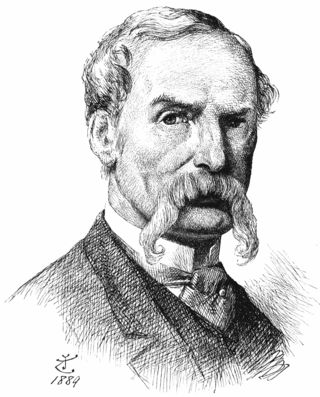
Sir John Tenniel was an English illustrator, graphic humourist and political cartoonist prominent in the second half of the 19th century. An alumnus of the Royal Academy of Arts in London, he was knighted for artistic achievements in 1893, the first such honour ever bestowed on an illustrator or cartoonist.

"Jabberwocky" is a nonsense poem written by Lewis Carroll about the killing of a creature named "the Jabberwock". It was included in his 1871 novel Through the Looking-Glass, the sequel to Alice's Adventures in Wonderland (1865). The book tells of Alice's adventures within the back-to-front world of Looking-glass world.
The Annotated Alice is a 1960 book by Martin Gardner incorporating the text of Lewis Carroll's major tales, Alice's Adventures in Wonderland (1865) and Through the Looking-Glass (1871), as well as the original illustrations by John Tenniel. It has extensive annotations explaining the contemporary references, mathematical concepts, word play, and Victorian traditions featured in the two books.

Alice's Adventures in Wonderland is an 1865 English children's novel by Lewis Carroll, a mathematics don at Oxford University. It details the story of a young girl named Alice who falls through a rabbit hole into a fantasy world of anthropomorphic creatures. It is seen as an example of the literary nonsense genre. The artist John Tenniel provided 42 wood-engraved illustrations for the book.
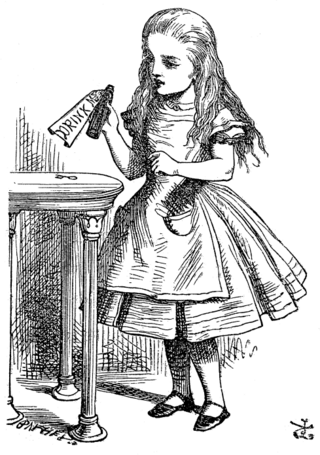
Alice is a fictional character and the main protagonist of Lewis Carroll's children's novel Alice's Adventures in Wonderland (1865) and its sequel, Through the Looking-Glass (1871). A child in the mid-Victorian era, Alice unintentionally goes on an underground adventure after falling down a rabbit hole into Wonderland; in the sequel, she steps through a mirror into an alternative world.

Alice Pleasance Hargreaves was an English woman who, in her childhood, was an acquaintance and photography subject of Lewis Carroll. One of the stories he told her during a boating trip became the classic 1865 children's novel Alice's Adventures in Wonderland. She shared her name with "Alice", the story's heroine, but scholars disagree about the extent to which the character was based upon her.

The Hatter is a fictional character in Lewis Carroll's 1865 book Alice's Adventures in Wonderland and its 1871 sequel Through the Looking-Glass. He is very often referred to as the Mad Hatter, though this term was never used by Carroll. The phrase "mad as a hatter" pre-dates Carroll's works. The Hatter and the March Hare are referred to as "both mad" by the Cheshire Cat, in Alice's Adventures in Wonderland in the sixth chapter titled "Pig and Pepper".

A bandersnatch is a fictional creature in Lewis Carroll's 1871 novel Through the Looking-Glass and his 1874 poem The Hunting of the Snark. Although neither work describes the appearance of a bandersnatch in great detail, in The Hunting of the Snark, it has a long neck and snapping jaws, and both works describe it as ferocious and extraordinarily fast. Through the Looking-Glass implies that bandersnatches may be found in the world behind the looking-glass, and in The Hunting of the Snark, a bandersnatch is found by a party of adventurers after crossing an ocean. Bandersnatches have appeared in various adaptations of Carroll's works; they have also been used in other authors' works and in other forms of media.

Thomas Hood was an English humorist, playwright and author. He was the son of the poet and author Thomas Hood. Pen and Pencil Pictures (1857) was the first of his illustrated books. His most successful novel was Captain Master's Children (1865).

Lewis Carroll's books Alice's Adventures in Wonderland (1865) and Through the Looking-Glass (1871) have been highly popular in their original forms, and have served as the basis for many subsequent works since they were published. They have been adapted directly into other media, their characters and situations have been appropriated into other works, and these elements have been referenced innumerable times as familiar elements of shared culture. Simple references to the two books are too numerous to list; this list of works based on Alice in Wonderland focuses on works based specifically and substantially on Carroll's two books about the character of Alice.
"You Are Old, Father William" is a poem by Lewis Carroll that appears in his 1865 book Alice's Adventures in Wonderland. It is recited by Alice in Chapter 5, "Advice from a Caterpillar". Alice informs the Caterpillar that she has previously tried to repeat "How Doth the Little Busy Bee" and has had it all come wrong as "How Doth the Little Crocodile". The Caterpillar asks her to repeat "You Are Old, Father William", and she recites it.
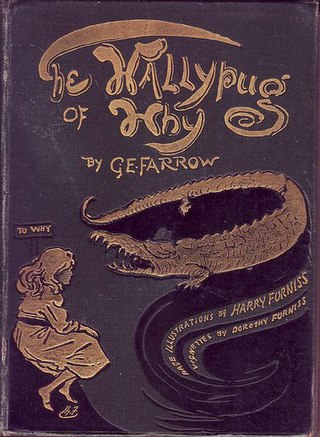
The Wallypug of Why is an 1895 children's novel by G. E. Farrow. The book is an exercise in humorous nonsense, rich in wordplay and absurd situations, in the tradition of Lewis Carroll's Alice's Adventures in Wonderland. A popular success, it inaugurated a series of Wallypug sequels.

Alice's Adventures in Wonderland retold in words of one syllable is a retelling by Mrs. J. C. Gorham of Lewis Carroll's 1865 novel, written in 1905 and published by A. L. Burt of New York. It is part of Burt's Series of One Syllable Books, which was "selected specially for young people's reading, and told in simple language for youngest readers". The series included such works as Aesop's Fables, Anderson's Fairy Tales, Bible Heroes, Grimm's Fairy Tales, The Life of Christ, Lives of the Presidents, Pilgrim's Progress, Reynard the Fox, Robinson Crusoe, Sanford and Merton, and Swiss Family Robinson.
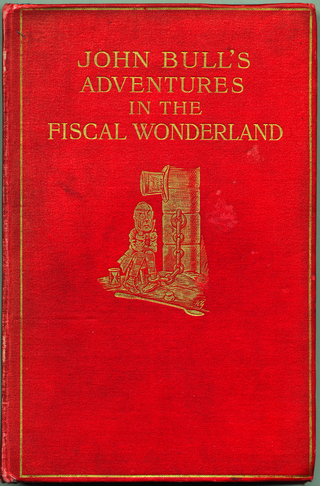
John Bull's Adventures in the Fiscal Wonderland is a novel by Charles Geake and Francis Carruthers Gould, written in 1904 and published by Methuen & Co. of London. It is a political parody of Lewis Carroll's two books, Alice's Adventures in Wonderland (1865) and Through the Looking-Glass (1871).

New Adventures of Alice is a novel by John Rae, written in 1917 and published by P. F. Volland of Chicago. It is, according to Carolyn Sigler, one of the more important "Alice imitations", or novels inspired by Lewis Carroll's Alice books.

Gladys in Grammarland is a novel by Audrey Mayhew Allen, written c. 1897 and published by the Roxburghe Press of Westminster. It is an educational imitation of Lewis Carroll's 1865 book Alice's Adventures in Wonderland.

There are more than 100 illustrators of English-language editions of Alice's Adventures in Wonderland (1865) and Through the Looking-Glass (1871), with many other artists for non-English language editions. The illustrator for the original editions was John Tenniel, whose illustrations for Alice and Looking Glass are among the best known illustrations ever published.
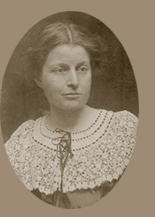
Anna Richards Brewster was an American painter.

Anna Matlack Richards (1834–1900) was a 19th-century American children's author, poet and translator best known for her fantasy novel, A New Alice in the Old Wonderland.
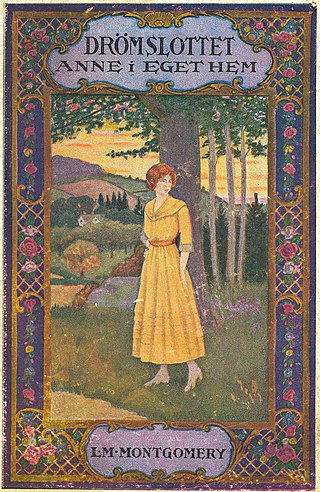
Maria Louise Kirk, usually credited as M. L. Kirk or Maria L. Kirk, was an American painter and illustrator of more than fifty books, most of them for children.



















